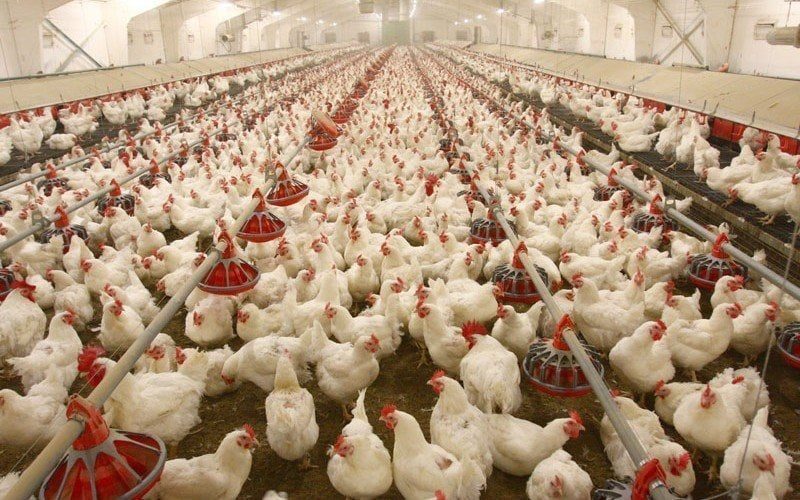Porto Alegre, August 8, 2023 – Avian influenza is still on the radar of Brazil, with government agencies and other competent entities working in a state of alert to avoid more serious problems, similar to those seen in the United States and the European Union, where the uncontrolled spread of the disease caused a great economic impact, with the loss of millions of commercial birds due to the disease. The size of Avian Influenza in Brazil is still inexpressive, so far there have been only 74 outbreaks of the disease, 72 of them in wild birds, and only two in backyard birds.
The Brazilian government recommended that the states adopt the state of zoosanitary emergency to achieve a better fight against the disease, reducing bureaucracy access to funds. Since then, several states, including Paraná (the largest producer in the country), have already adopted the measure. The fact is that up to now the strategies adopted by the country, in a coordinated action between public and private initiative, have been quite assertive, directing containment measures to the areas of greatest risk, in this case the Atlantic Route, which concentrates the overwhelming majority of cases.
According to the WOAH protocol, these outbreaks of the disease do not cause Brazil to lose its Avian Influenza-free status, which sustains an intense pace of exports. Brazil today has enormous representation in the global context, with a third of all chicken meat exported. The sector is going through a moment of disequilibrium, even with record sales in the first half of the year, there is an excess of supply in the domestic market, which has even destabilized the formation of prices for competing proteins. There is an evident need to adjust production to adapt Brazilian production to demand.
The positive point for the Brazilian meat industry, especially for chicken, is the decline in animal nutrition costs, in line with the entry of a huge second crop during the second semester. This is another highly debatable point, since even with lower costs the sector cannot enjoy considerable gains in operating margin. In this case, the problem is oversupply, as already portrayed.
For the year 2024, in view of a scenario of more depressed costs in Brazil due to the prospect of an excellent volume of grain production, especially soybeans, the expectation is still for a large volume of chicken meat production, but not at the same level as in 2023. The rationale is to wait for some cut in housing, even if this occurs in a measured way, adapting the supply profile to demand.
The expectation, according to SAFRAS & Mercado, is that Brazil will house around 6.97 bln chicks, a decrease of approximately 0.75% from the current year, when Brazil must house around 7 bln chicks. In terms of production, the expectation is for a slight decrease between one year and another. The expectation is that next year around 14.86 mln tons will be produced, compared to 14.94 mln tons, a decrease of 0.54% from one year to the other.
In the global context, Brazil remains quite calm, there are several factors that lead to this, among them:
– Uncontrolled Avian Influenza in the Northern Hemisphere. Avian Influenza causes serious damage to European and US chicken farming, leading to the death of millions of birds. In addition, the meat sector that operates in these regions is faced with temporary restrictions on sales of chicken meat in the international market, in accordance with the protocol imposed by the WOAH, incurring serious economic losses;
– Greater competitiveness. Even with an exchange rate appreciation process throughout the year, Brazilian chicken meat remains more competitive when compared to competitors. Even Mexico, a notorious consumer of chicken meat from the United States, has been buying in the Brazilian market. This is a very clear symptom of the greater competitiveness of the Brazilian product;
– Increased production of halal chicken. Brazil is the largest producer of halal chicken meat, captivating demand from countries with an Islamic majority, sales to the Middle East are very representative and make a huge difference for the sector in Brazil, with interesting average prices, guaranteeing excellent revenue;
– Difficulties in the beef sector in the United States. The lower production of beef in the United States, due to the timing of the livestock cycle, redirects part of the US demand to other proteins of animal origin, making the second-largest exporter of chicken meat prioritize serving its domestic market.
With all these variables, it is safe to say that Brazil will maintain the global leadership of chicken meat exports, even in the face of the threat that Avian Influenza poses to the country. The trend is for a strong pace of exports next year, with approximately 4.98 mln tons. The number is significant, but without repeating the performance of 2023, in which more than 5 mln tons of chicken meat will be exported.
With these figures, the tendency is for around 9.89 mln tons of meat to be offered in the domestic market, a slight decrease when compared to the current year in which around 9.94 mln tons of meat should be made available in the domestic market of chicken. It is worth mentioning that this is the most affordable protein of animal origin, very important for a huge portion of the Brazilian population. Maintaining the production level of chicken meat in this proportion is an important guarantee of food security.
Given this framework, there is a clear tendency for the Brazilian chicken sector to still prioritize exports. The premise of a more devalued real in the middle of the cut in prime interest rates ends up improving the conversion rate of exports. In addition, the Brazilian economy still has visible difficulties in terms of job and income creation.
Copyright 2023 – Grupo CMA

